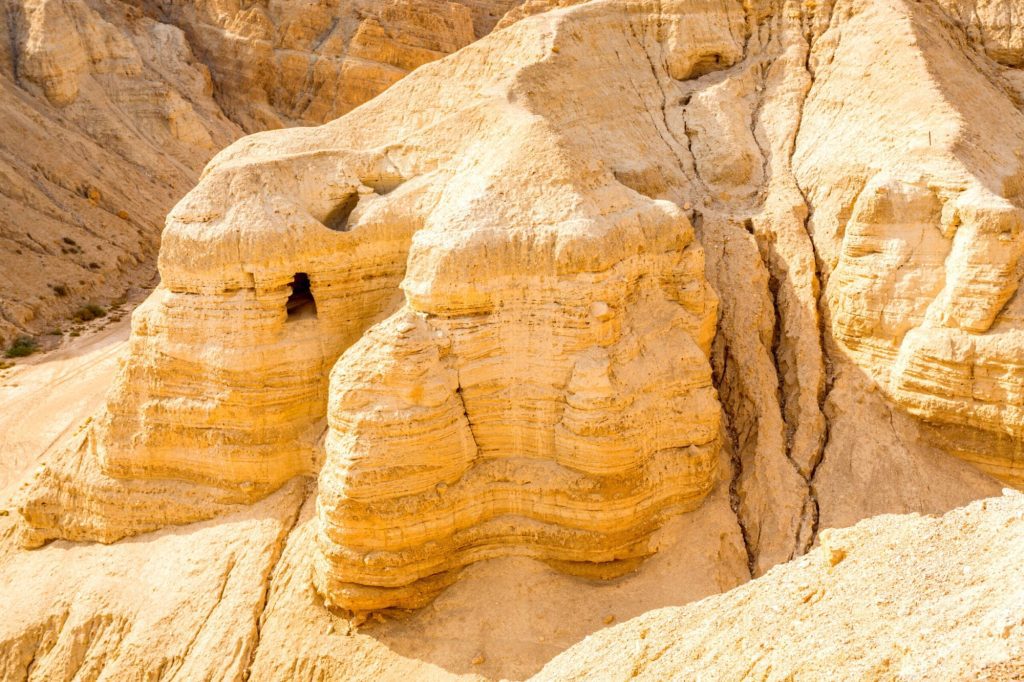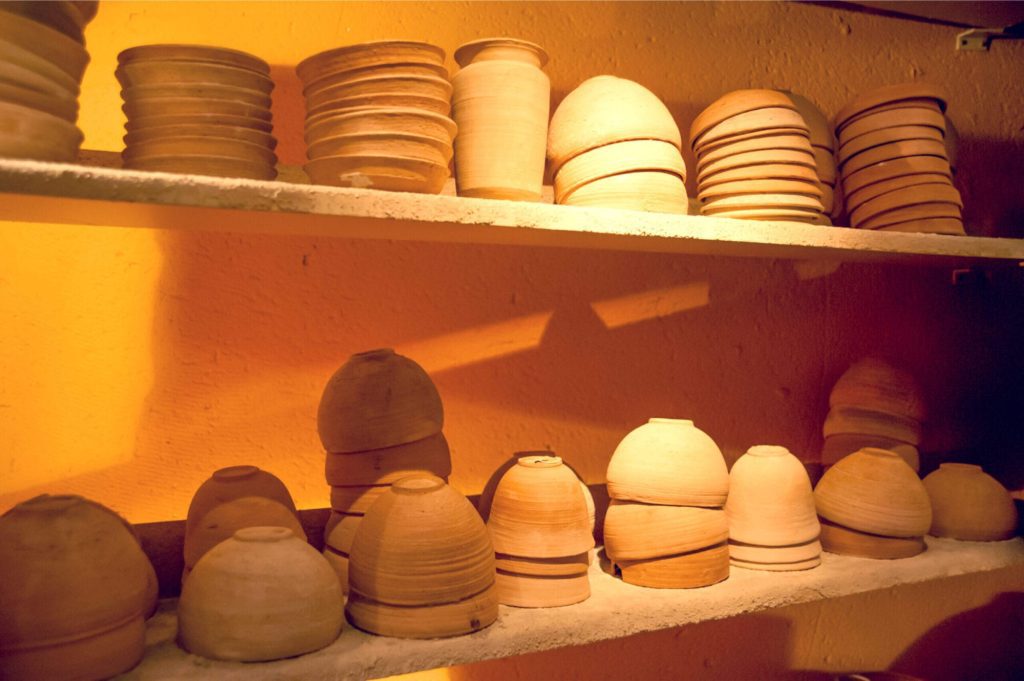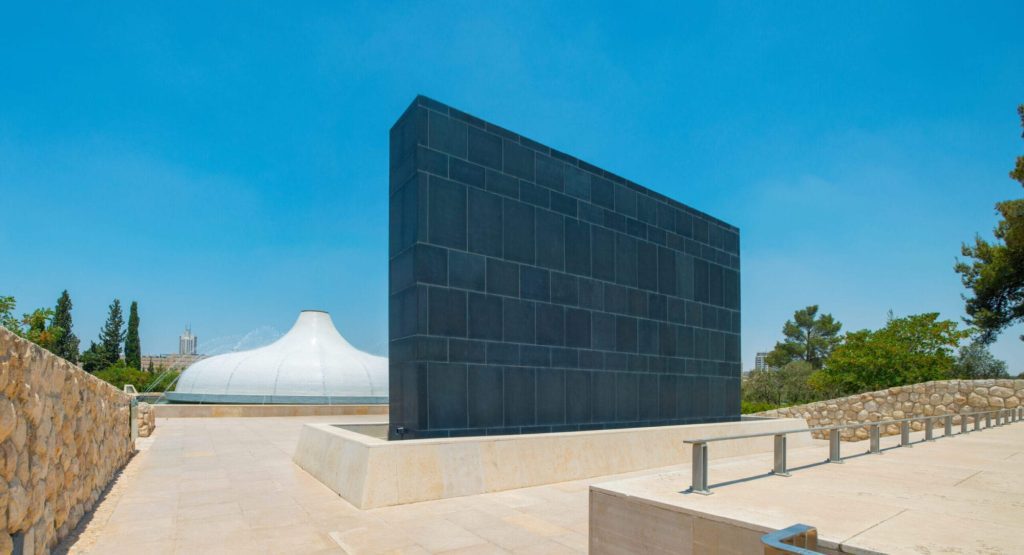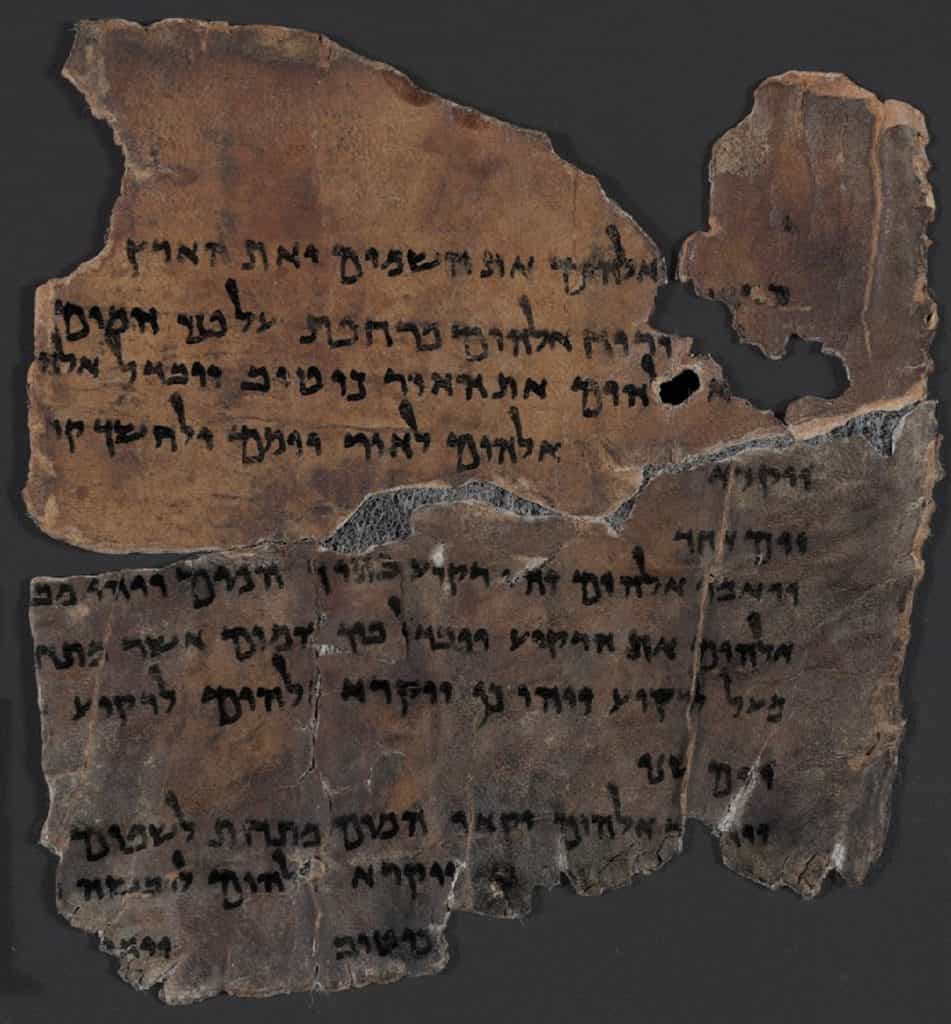The Dead Sea Scrolls (also the Qumran Caves Scrolls) are ancient Jewish religious manuscripts that were found in the Qumran Caves in the Judaean Desert, near Ein Feshkha on the northern shore of the Dead Sea on the West Bank. Scholarly consensus dates these scrolls from the last three centuries BCE and the first century CE.

The texts have great historical; religious, and linguistic significance because they include the second-oldest known surviving manuscripts of works later included in the Hebrew Bible canon, along with deuterocanonical and extra-biblical manuscripts which preserve evidence of the diversity of religious thought in late Second Temple Judaism. Almost all of the Dead Sea Scrolls are held by the state of Israel in the Shrine of the Book on the grounds of the Israel Museum. But ownership of the scrolls is disputed by Jordan and Palestine.

More About the Dead Sea Scrolls
Many thousands of written fragments have been discovered in the Dead Sea area. They represent the remnants of larger manuscripts damaged by natural causes or through human interference; with the vast majority holding only small scraps of text. However, a small number of well-preserved, almost intact manuscripts have survived – fewer than a dozen among those from the Qumran Caves.
Researchers have assembled a collection of 981 different manuscripts – discovered in 1946/47 and in 1956 – from 11 caves. The 11 Qumran Caves lie in the immediate vicinity of the Hellenistic-period Jewish settlement at Khirbet Qumran in the eastern Judaean Desert. The caves are located about one mile west of the northwest shore of the Dead Sea; whence they derive their name. Scholarly consensus dates the Qumran Caves Scrolls from the last three centuries BCE and the first century CE. Bronze coins found at the same sites form a series beginning with John Hyrcanus (in office 135–104 BCE) and continuing until the period of the First Jewish–Roman War (66–73 CE), supporting the radiocarbon and paleographic dating of the scrolls.

Are There More Ancient Scrolls Than the Dead Sea Scrolls?
excavated in Jerusalem at Ketef Hinnom and dated c. 600 BCE. In other words older the Dead Sea Scrolls. Also the third-oldest surviving known piece of the Torah, the En-Gedi Scroll; consists of a portion of Leviticus found in the Ein Gedi synagogue; burnt in the 6th century CE and analyzed in 2015. Research has dated it palaeographically to the 1st or 2nd century CE, and using the C14 method to sometime between the 2nd and 4th centuries CE.
In Which Language The Dead Sea Scrolls are Written?
Most of the texts use Hebrew; with some written in Aramaic (for example the Son of God text; in different regional dialects, including Nabataean); and a few in Greek. Discoveries from the Judaean Desert add Latin (from Masada). Most of the texts are written on parchment; some on papyrus, and one on copper.
Archaeologists have long associated the scrolls with the ancient Jewish sect called the Essenes; although some recent interpretations have challenged this connection and argue that priests in Jerusalem, or Zadokites, or other unknown Jewish groups wrote the scrolls.
Owing to the poor condition of some of the scrolls, scholars have not identified all of their texts. The identified texts fall into three general groups:
- About 40% are copies of texts from the Hebrew Scriptures.
- Approximately another 30% are texts from the Second Temple Period which ultimately were not canonized in the Hebrew Bible, like the Book of Enoch; the Book of Jubilees; the Book of Tobit; the Wisdom of Sirach, Psalms 152–155, etc.
- The remainder (roughly 30%) are sectarian manuscripts of previously unknown documents that shed light on the rules and beliefs of a particular group (sect) or groups within greater Judaism; like the Community Rule; the War Scroll; the Pesher on Habakkuk; and The Rule of the Blessing.

The Dead Sea Scrolls Initial Discovery
So the initial discovery of the Dead Sea Scrolls was by Bedouin shepherds. It took place between 1946 and 1947. The shepherds discovered seven scrolls housed in jars in a cave near what is now known as the Qumran site. One of them noticed the caves; while another was the first to actually fall into one (the cave now called Cave 1). Moreover, he retrieved a handful of scrolls like the Isaiah Scroll; Habakkuk Commentary, and the Community Rule. Then he took them back to the camp to show to his family. None of the scrolls were destroyed in this process.

The Bedouin kept the scrolls hanging on a tent pole while they figured out what to do with them; periodically taking them out to show to their people. At some point during this time; the Community Rule was split in two. Eventually, the Bedouin first took the scrolls to a nearby market at Bethlehem; where a Syrian Christian offered to buy them. they took the scrolls to Khalil Eskander Shahin (Nicknamed “Kando”). Which were a cobbler and part-time antique dealer that bought four Dead Scrools out of the seven they had for the worth of today’s 29USD. The rest were acquired by an Israeli Archegoligst Y.L Sukenik on behalf of the State of Israel.

